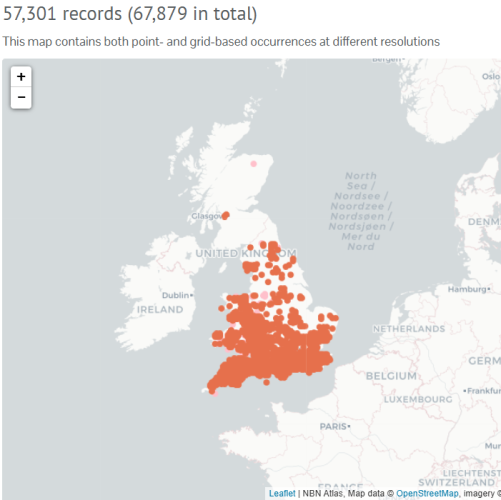Over 20 rare hazel dormice have been reintroduced into a secret woodland location in Leicestershire by wildlife charity People’s Trust for Endangered Species (PTES) and partners, creating the county’s only known population of the tiny mammal.
The dormice have been released into a woodland on the Bradgate Park Trust estate, which is a Site of Special Scientific Interest and part of a National Nature Reserve. It has been carefully selected with the help of the Leicestershire & Rutland Wildlife Trust, the Leicestershire & Rutland Mammal Group, the National Forest and Twycross Zoo. Together with PTES, they have ensured the woodland is suitable for dormice now and into the future, thanks to ongoing sympathetic woodland management by Bradgate Park Trust which creates an ideal habitat for dormice and other woodland species.
Conservation effort
This landmark conservation effort, led by PTES, is a crucial part of ongoing work to save hazel dormice, which have declined nationally by 70% since 2000. Dormice are considered extinct from 20 English counties since Victorian times and are categorised as ‘Vulnerable’ on the IUCN Red List for Britain’s Mammals.
The reintroduction builds on the success of the nearby 2023 dormouse reintroduction at National Trust’s Calke Abbey which saw 38 dormice return to the National Forest for the very first time. Despite that release being within the forest’s Derbyshire border, this secondary reintroduction is a vital step forward for dormouse recovery nationally and regionally, which will one day form part of a wider population spanning the whole forest.
Ian White, Dormouse & Training Officer at People’s Trust for Endangered Species explains:
“Despite once being a common part of Britain’s woodlands and hedgerows, hazel dormice have experienced a historic and catastrophic decline due to habitat loss, degradation and poor management of woodlands and hedgerows, compounded by a changing climate. PTES’ reintroductions, alongside habitat management, landscape projects and monitoring, are paramount to their long-term survival.
Since the programme began in 1993, we have released 1,142 dormice into 26 different woodlands in 13 counties – including six English counties where they had previously been lost. This is a phenomenal achievement and is a great step towards restoring hazel dormice to their former range, but this is only possible with the correct woodland management in place, and of course with the help of our partners.”
James Dymond, Director, Bradgate Park Trust said:
“Bradgate Park estate is home to some of the best ancient woodland remaining in Leicestershire, which is why it was chosen as the dormice’s new home. As a small charity, we are proud to be entrusted with the care of these rare and charming creatures. This reintroduction is a testament to the past woodland management efforts on the estate, and we are committed to ensuring this special habitat continues to thrive—not only for the dormice, but for a wide range of other rare species that call it home too.”
PTES’ annual dormouse reintroductions are part of Natural England’s Species Recovery Programme.
To find out more about PTES’ dormouse conservation work, visit PTES’ website.
NBN Atlas dormouse map
See the distribution of hazel dormouse available on the NBN Atlas.

